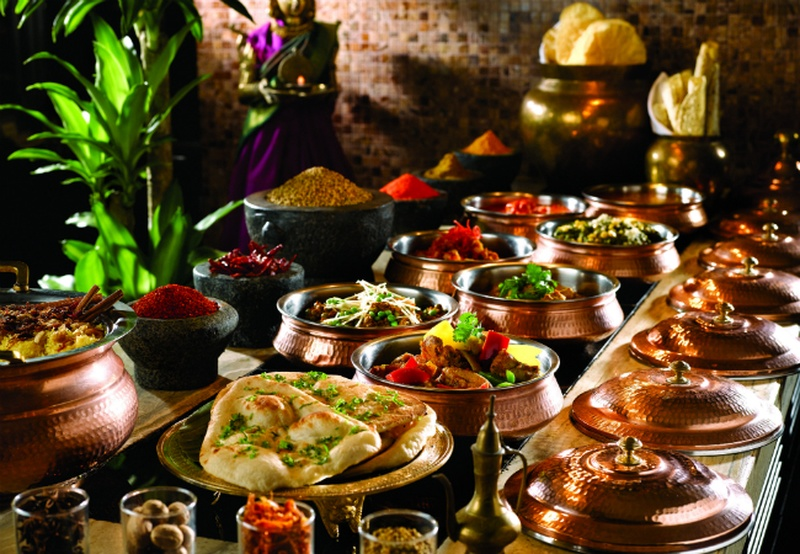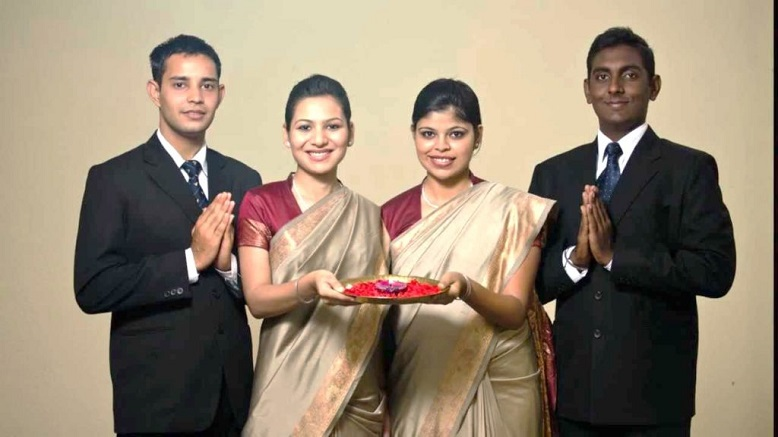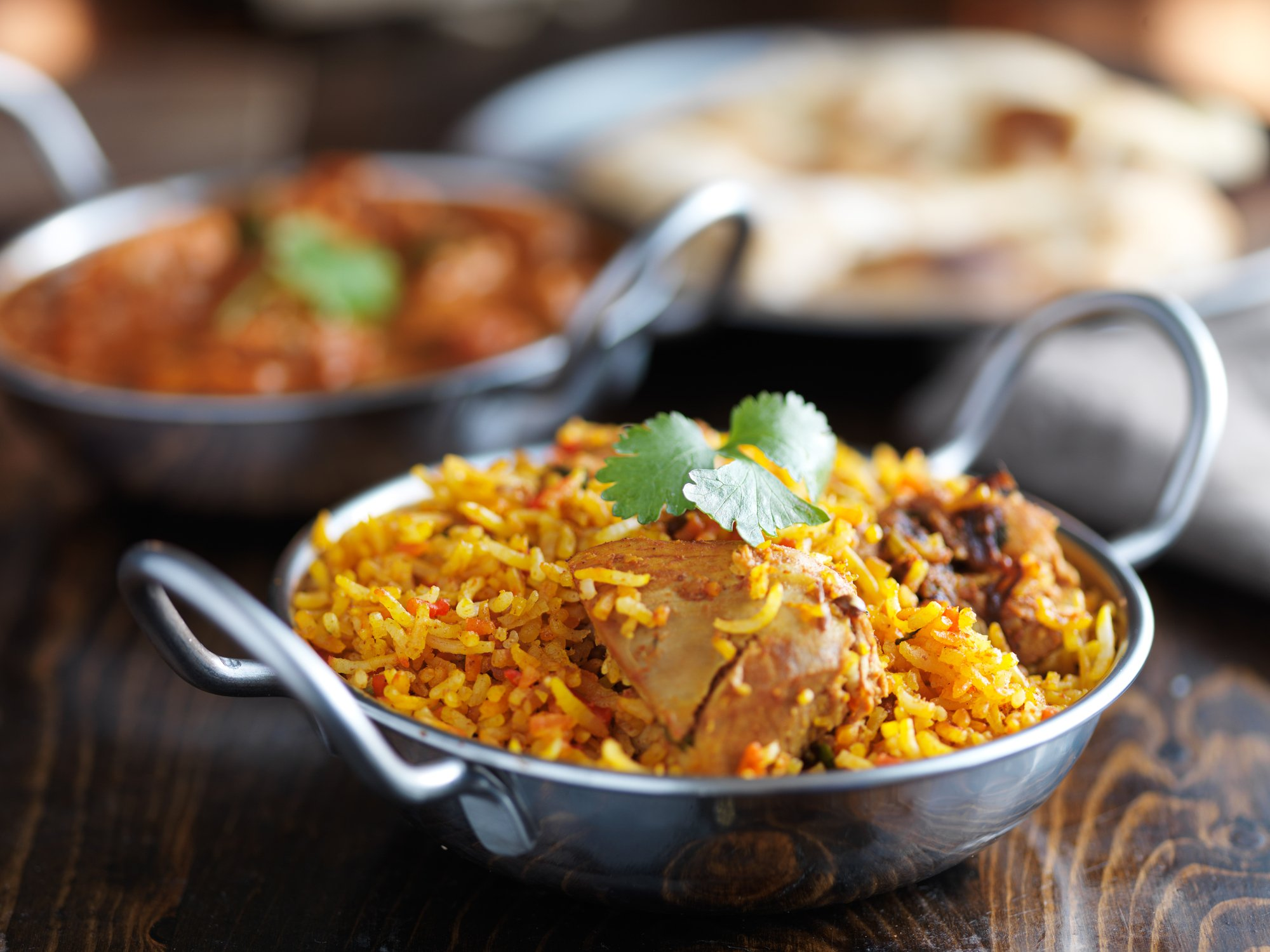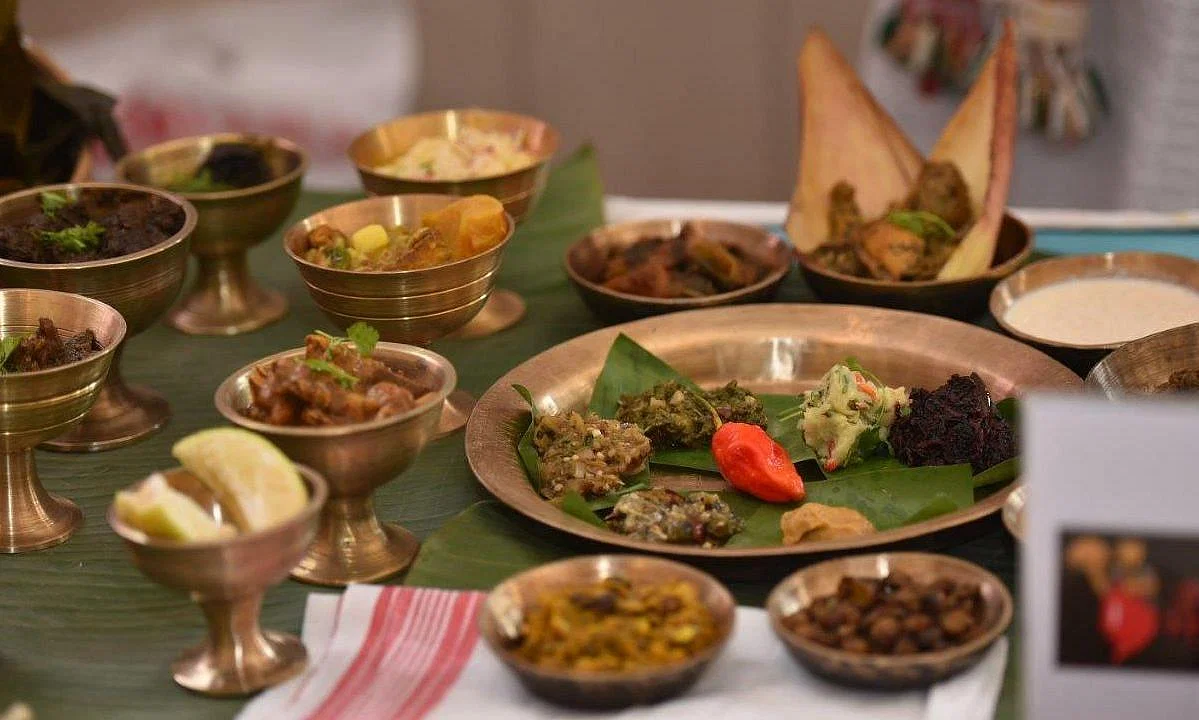Cooking is at once child's play and adult joy. And cooking done with joy is an act of love - Craig Claiborne
Indian cuisine is renowned worldwide for its rich flavours, vibrant spices, and diverse culinary traditions. With a history steeped in ancient traditions and influenced by various regional cultures, Indian cuisine offers a tempting array of exotic and comforting dishes. From hearty curries to aromatic biryanis, the culinary landscape of India is a treasure trove for food enthusiasts.
The history of Indian cuisine is deeply rooted in the country's cultural heritage, spanning centuries of culinary evolution. Influenced by invaders, traders, and settlers throughout history, Indian cuisine has absorbed diverse culinary techniques and ingredients to create a unique and intricate tapestry of flavours. The fusion of indigenous spices, herbs, and cooking methods has resulted in a remarkable culinary tradition that varies from region to region, each with its distinctive character.

Indian Cuisine History
The Indian Cuisine History is a tapestry woven with ancient traditions, cultural influences, and a rich culinary heritage. Spanning thousands of years, the evolution of Indian cuisine is a fascinating journey that reflects the country's diverse regional cultures, trade connections, and historical events. From the ancient Indus Valley Civilization to the present day, Indian food has been shaped by many factors, resulting in a vibrant and flavorful culinary landscape.

Harappan Civilization
The roots of Indian cuisine can be traced back to the Harappan civilization, one of the world's earliest urban civilizations, which thrived around 2500 BCE. Archaeological excavations have revealed the existence of grain storage facilities, evidence of a well-established agrarian society. The people of the Indus Valley relied heavily on staples like wheat, barley, rice, and lentils, which continue to be fundamental ingredients in Indian cooking to this day.
Indo-Aryans Age
Over time, India witnessed the arrival of various groups and civilizations, each leaving its mark on the country's food culture. Around 1500 BCE, the Indo-Aryans brought the practice of farming and cattle rearing, introducing dairy products, such as ghee (clarified butter) and yoghurt, into the cuisine. This period also saw the emergence of Ayurveda, an ancient Indian system of medicine that emphasized the connection between food and health, leading to the development of cooking techniques that preserved the nutritional value of ingredients.
Modern India
Trade played a crucial role in shaping Indian cuisine. The Silk Road, an ancient network of trade routes connecting Asia, Europe, and Africa, facilitated the exchange of goods, including spices, between India and the rest of the world. Spices like black pepper, cinnamon, cardamom, and cloves became highly sought after, significantly influencing Indian culinary practices. The trade routes also introduced new ingredients, such as potatoes, tomatoes, and chillies, seamlessly integrated into Indian cooking, revolutionizing the flavour profiles of many dishes.
Medieval Period
During the medieval period, establishing the Delhi Sultanate and the subsequent Mughal Empire brought significant culinary changes to India. The Mughals, with their Persian and Central Asian heritage, introduced techniques such as dum pukht (slow-cooking in sealed containers) and elaborate meat dishes like biryanis and kebabs. They also enriched Indian sweets and desserts with nuts, saffron, and aromatic essences, creating delicacies like the famous Mughlai cuisine.
Colonization
Colonization marked another significant chapter in the food history of India. The Portuguese, Dutch, French, and British left an indelible mark on Indian cuisine, introducing ingredients like tomatoes, potatoes, and chilli peppers and influencing certain regions' cooking methods and flavours. The British Raj also brought the concept of tea and afternoon tea culture to India, which is now an integral part of the country's culinary fabric.
Food History of India
Today, Indian cuisine is a testament to this vibrant history, with its diverse regional specialities, street food delicacies, and elaborate festive dishes. Each region boasts its unique flavours, ingredients, and cooking techniques. From the rich and aromatic curries of the north to the spicy seafood delights of the coastal regions and the vegetarian feasts of the south, Indian food celebrates culinary diversity.
The food history of India is a story of innovation, adaptation, and fusion, reflecting the country's cultural tapestry. It is a testament to the resilience and creativity of the people who have shaped and preserved the flavours of the past while embracing the influences of the present. Exploring the culinary heritage of India offers a delightful sensory experience that not only satiates the appetite but also provides a glimpse into the cultural fabric of this vast and diverse nation.
Hone your culinary skills with cooking classes on Superprof!


Indian Food Culture
Indian food culture is a captivating mosaic of flavours, rituals, and social customs that have evolved over thousands of years. Deeply rooted in traditions and influenced by regional diversity, religious practices, and historical events, Indian food culture celebrates culinary heritage and community bonding. Let's delve into the fascinating aspects that define Indian food culture.
Regional Diversity
One of the most striking aspects of Indian food culture is its regional diversity. Each state and even smaller regions within states have distinct culinary traditions, ingredients, and cooking techniques. From the spicy curries of Punjab to the delicate flavours of Bengali cuisine, the tangy dishes of Maharashtra to the aromatic biryanis of Hyderabad, every region showcases its unique flavours, reflecting the local produce, climate, and cultural influences.
Vegetarianism and Veganism
India has a long-standing tradition of vegetarianism, with a significant portion of the population following a vegetarian or vegan diet. Influenced by religious practices such as Hinduism and Jainism, many Indians refrain from consuming meat, making vegetarian dishes an integral part of Indian cuisine. Vegetarian cooking in India is incredibly diverse and showcases the versatility of vegetables, lentils, and dairy products in creating flavorful and satisfying meals.
Spices and Aromatics
Indian cuisine is renowned for its vibrant and aromatic flavours, thanks to the skilful use of spices and aromatics. Many spices add depth and complexity to dishes, such as turmeric, cumin, coriander, cardamom, cinnamon, and cloves. Aromatics like ginger, garlic, onions, and curry leaves provide an irresistible fragrance. The art of spice blending, known as "masala," is a crucial aspect of Indian cooking, with each family or region having unique masala recipes.
Ayurvedic Principles
Ayurveda, the ancient Indian system of medicine, significantly influences Indian food culture. According to Ayurvedic principles, food is nourishment and a means of maintaining balance and harmony in the body and mind. The concept of "doshas" (vata, pitta, and kapha) guides the choice of ingredients, cooking methods, and flavours to create a well-rounded meal that promotes overall well-being.
Learn Ayurvedic recipes and more with cooking classes on Superprof.
Festivals and Rituals
Indian festivals and religious ceremonies are synonymous with lavish feasts and culinary delights. From the elaborate vegetarian meals during Navratri and Durga Puja to the indulgent sweets of Diwali and Eid, food plays a central role in celebrating these occasions. Special dishes and sweets are prepared, often using traditional recipes passed down through generations, creating a sense of nostalgia and cultural continuity.
Street Food Culture
Indian street food is a vibrant and integral part of Indian food culture. Street vendors and food stalls offer an array of snacks and delicacies that are delicious, affordable, and deeply satisfying. From crispy samosas and flavorful chaats to spicy pani puri and mouthwatering kebabs, street food brings people together, transcending social and economic boundaries and providing a unique culinary experience.
Community and Hospitality
Indian food culture places great importance on community and hospitality. Sharing meals with family, friends, and guests is sacred. The concept of "Atithi Devo Bhava" (Guest is equivalent to God) emphasizes the warm welcome and generosity shown towards visitors. Food is prepared with love and care, and no guest leaves without being offered a hearty meal or snack.

10 Most Popular Dishes to Try at Home
When it comes to exploring Indian cuisine, certain dishes have gained universal popularity and have become quintessential representations of the country's culinary identity. Whether you're a seasoned foodie or a curious beginner, these 10 dishes are a must-try in your culinary adventures at home.
Butter Chicken
A luscious and creamy tomato-based curry with tender chicken pieces, butter chicken is an iconic dish that epitomizes the indulgent side of Indian cuisine.
Biryani: Fragrant basmati rice cooked with aromatic spices, tender meat, and vegetables; biryani is a royal dish that tantalizes the taste buds with its complex flavours.
Masala Dosa
A crispy, fermented rice and lentil crepe filled with a spicy potato curry, masala dosa is a popular South Indian breakfast option that has gained popularity nationwide.
Paneer Tikka
Cubes of soft cottage cheese marinated in a spiced yoghurt mixture and grilled to perfection, paneer tikka is a vegetarian delight that showcases the versatility of Indian flavours.
Chole Bhature
A classic combination of spicy chickpea curry served with deep-fried bread, chole bhature is a beloved street food dish that promises a burst of flavours and textures.
Rogan Josh
A fragrant and aromatic Kashmiri lamb curry, Rogan Josh is a slow-cooked delicacy that exemplifies the art of spice blending in Indian cooking.
Samosa
Crispy pastry filled with a savoury mixture of potatoes, peas, and spices; samosas are popular snacks that have become a global favourite for their irresistible taste.
Palak Paneer
A creamy spinach curry with chunks of paneer (cottage cheese), palak paneer is a wholesome and nutritious dish that showcases the balance of flavours in Indian cuisine.
Chicken Tikka Masala
Succulent pieces of grilled chicken cooked in a velvety tomato-based curry, chicken tikka masala is a dish that has become synonymous with Indian cuisine in many parts of the world.
Gulab Jamun
A melt-in-your-mouth dessert made of fried milk dumplings soaked in a sweet syrup infused with cardamom and rose essence, gulab jamun is a heavenly indulgence that concludes any Indian meal on a sweet note.
Learn how to make all your favourite dishes and more with cooking classes!
Popular Dishes in Different Indian Regions
Here are some popular dishes from different regions of India:
North India
- Butter Chicken: A creamy and flavorful chicken dish cooked in a tomato-based gravy.
- Rogan Josh: A Kashmiri lamb curry with a rich blend of spices.
- Chole Bhature: Spicy chickpea curry served with deep-fried bread called bhature.
- Dal Makhani: Slow-cooked creamy lentils flavored with spices and butter.
- Tandoori Chicken: Marinated chicken cooked in a clay oven (tandoor) for a smoky flavor.
- Biryani: Fragrant rice dish cooked with meat (chicken, mutton, or fish) and spices.

South India
- Dosa: Thin, crispy rice and lentil crepes served with chutney and sambar.
- Idli: Steamed rice and lentil cakes served with coconut chutney and sambar.
- Sambar: Spicy lentil soup with vegetables, usually served with idli or dosa.
- Rasam: Tangy and spicy tomato-based soup flavored with tamarind and spices.
West India
- Vada Pav: A popular street food consisting of a spicy potato fritter served in a bread bun.
- Pav Bhaji: Mashed vegetable curry (bhaji) served with buttered bread rolls (pav).
- Dhokla: Steamed fermented chickpea flour snack served with chutney.
- Khandvi: Rolled gram flour snack tempered with mustard seeds and grated coconut.
- Gujarati Thali: A traditional platter consisting of a variety of dishes like dal, vegetables, roti, rice, and sweets.
East India
- Machher Jhol: Bengali-style fish curry prepared with mustard oil and spices.
- Litti Chokha: Baked wheat balls filled with roasted gram flour, served with mashed potatoes and brinjal (eggplant) chutney.
- Puchka/Gol Gappa: Hollow, crispy puris filled with a tangy mixture of tamarind water, spices, and chickpeas.
- Chhena Poda: A popular Odisha dessert made with paneer (cottage cheese), sugar, and cardamom.
Northeast India
- Momos: Steamed or fried dumplings filled with meat or vegetables, served with spicy chutney.
- Naga Pork Curry: Spicy pork curry prepared with smoked pork, local spices, and bamboo shoots.
- Assam Tea: A strong, flavorful black tea from Assam, often served with milk and sugar.
- Bamboo Shoot Fry: Stir-fried bamboo shoots seasoned with local spices.
- Khasi Blood Sausage (Doh Khleh): A unique dish made with coagulated pig blood, spices, and herbs.
Understanding the history of Indian food is essential before embarking on the journey of learning Indian cooking, as it provides invaluable context and appreciation for the cuisine. Knowing the historical roots helps grasp the cultural significance behind dishes, the use of specific spices and ingredients, and the regional variations, allowing aspiring cooks to approach Indian cuisine with respect, authenticity, and a deeper understanding of its traditions and flavours. Furthermore, you can also learn more about the Indian food history via Superprof.
Develop your culinary skills with a qualified chef teacher in cooking classes on Superprof!















